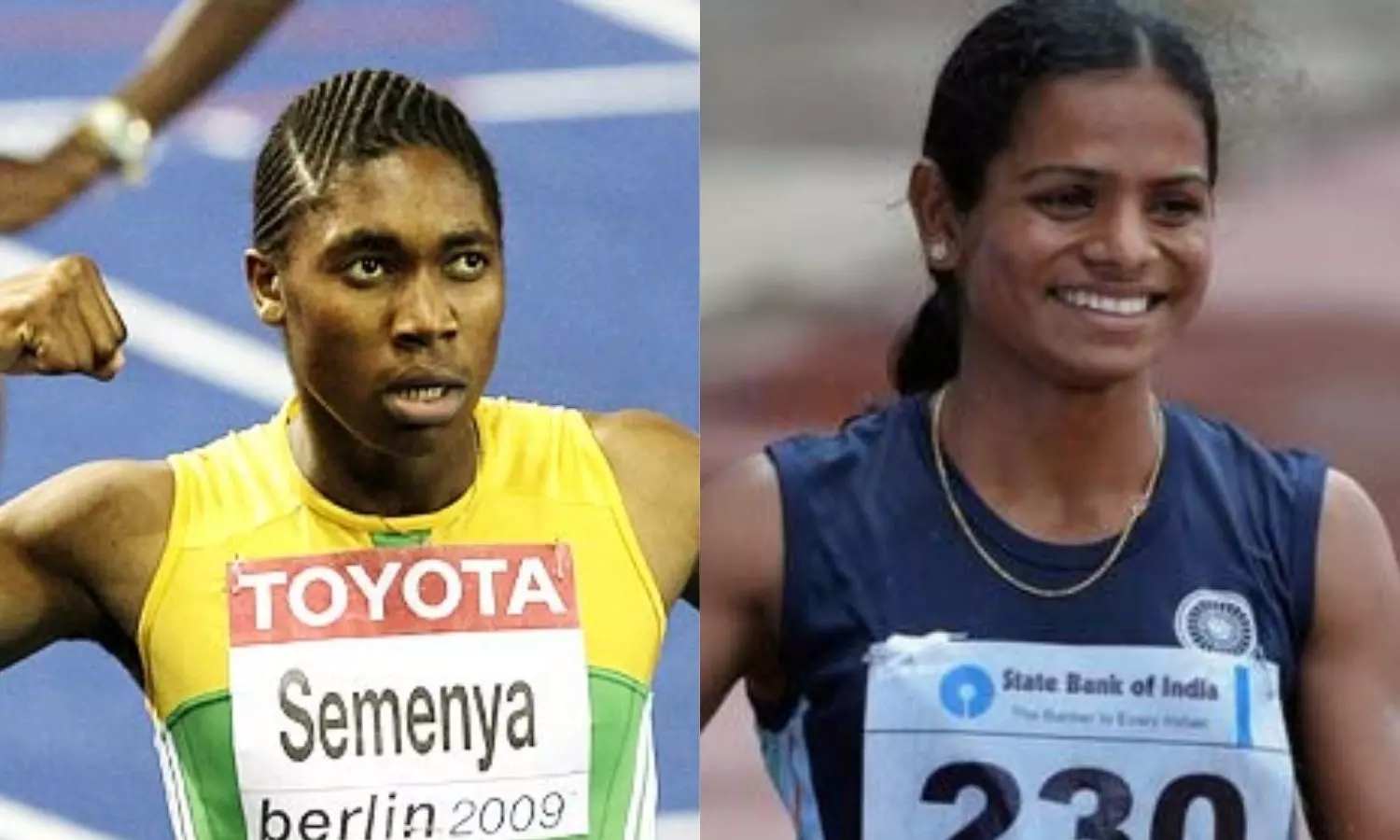Athletics
Gender Testing in Sports - What is it and when was it started?
Sex verification tests or gender testing in sports, as the name suggests, is a series of tests conducted to ascertain the gender of an athlete.

Caster Semenya and Dutee Chand were subjected to the Hormone Test.
A new sports-based Bollywood film, Rashmi Rocket, hit the Over the Top (OTT) platform Zee5 on 15th October 2021. While the film starring Taapsee Pannu has received some brilliant reviews including a rating of 8 in IMDb, it also has managed to get Indians talk about something unusual.
One of the core aspects Rashmi Rocket dealt with in the movie was the issue of gender testing in sports. From the day the film was released there have been a lot of talks about this cruel subject.
But, what exactly is gender testing?
Sex verification tests or gender testing in sports, as the name suggests, is a series of tests conducted to ascertain the gender of an athlete.
It was first introduced in the world of sports by the International Association of Athletics Federation (IAAF) in 1950 on suspicions that men with a higher physical advantage were competing in events dedicated to female athletes by disguising themselves as women.
The very first real objection against gender testing rose when Dutch athlete Foekje Dillema was banned for life by IAAF for refusing to undergo a mandatory gender test ahead of the 1950 European Championships in 1950.
Since its inception, gender testing was mandatory for all female athletes until the year 1992 before the IAAF ceased it and ruled that gender testing will not be mandatory for athletes but it will be conducted if suspicions are raised about any athlete's performance in the future. It was never really conducted on male athletes.
The gender testing of female athletes once again came to the fore when South African athlete Caster Semenya was subjected to it in the year 2009 after her gold medal win in 800m at the World Championships.
There have been instances of athletes being subjected to gender testing in India as well. An Indian athlete Pratima Gaonkar died by suicide in the year 2001 after failing a gender test.
The stories of the kind of torture some of the top Indian athletes like Pinki Pramanik, Santi Soundarajan and Dutee Chand were put through are well documented.
How does Gender Testing happen?
During the early days, the athletes were forced to walk naked in front of doctors, which later came to be known as the 'nude parade'. In other cases, athletes were forced to lie on their backs and pull their knees to the chest for closer inspection.
Later the International Olympic Committee (IOC) introduced Chromosome Testing ahead of the 1968 Mexico Games. This, however, was scrapped later as it was found to be inconclusive in identifying 'masculinity.'
Nowadays gender testing is conducted via something called hormone testing. In this, the testosterone level of an athlete is inspected and if the level of testosterone is higher than the prescribed level, the athletes are banned from competing.
